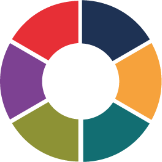Workplace redesign – it wasn’t part of the plan
The post C-19 level of workplace redesign is unprecedented and was absolutely never in the plan for Q3 2020. Few if any organisations had blueprints for dealing with a global pandemic. Even now, nine months in, there are still more unknowns that knowns.
For almost all organisations in most industries and in most parts of the world, how and where we work has changed beyond recognition during lockdown. As we cautiously navigate our way out of C-19, there is much speculation about ‘the future of work’. We’ve considered some of the emerging themes and this is our take on ‘what next’…
The challenges and opportunities ahead
Barely a day goes by without a new ‘post C-19 HR/ workforce playbook’ being published. They’re often written by consulting companies, with small armies of bright consultants off the clock, each with subtly different approaches but all focusing on a common theme: how to get organisations back working effectively and efficiently again.
The best examples we’ve found are Deloitte’s ‘Workforce strategies for a post-COVID-19 recovery Workbook’ and McKinsey’s ‘Beyond coronavirus: The path to the next normal’. These playbooks are fascinating reads and very logical, but can be pretty overwhelming at a time when leaders are looking for actionable clarity.
At PCS, we spend a significant amount of time speaking to senior leaders in HR and Learning & Development and researching contemporary themes. It’s going to be a busy few months for business leaders reshaping businesses and realigning workforces. Below we’ve compiled three considerations to help you navigate this challenging but potentially transformative process.
1. Provide employees with a choice
Although it’s easy to focus on the short-term business imperative to keep costs down and rejuvenate revenue streams, employees have both become used to the perception of choice (“do I come into the office or not”) or are craving for it (“I can’t wait to have more adult company outside the four walls of this flat”). Forcing employees, who have coped with a lot of change recently, to do 180s on working patterns will add to heightened stress and be could be counterproductive.
Consider a win-win position where you’re only able to physically accommodate a fraction of your workforce and invite employees to spend a proportion of their working week ‘back at work’. This will help reconnect some people (possibly those who need to be co-located) and empower people to choose where to work. When employees can actively participate in the decision to ‘return to work’, they are more likely to be happy and motivated.
2. Plan for resilience
We don’t know how long the C-19 tail will be and what challenges are around the corner. Plan to succeed but have a few plan Bs to cope with protracted disruption and more shocks. Invest time to understand what worked well and what didn’t during the peak of lockdown. Have a plan B to roll-back to full lockdown mode at a few days’ notice and ensure that the systems and processes are in place to be able to activate this state if necessary.
3. Be bold
Last few months have forced most aspects of most business to think outside of the box – don’t lose this momentum and innovative thinking. Employees, customers and investors have become accustomed to sizable and rapid change. As a HR leader, you won’t have another opportunity like this to try something different and novel.
Right now, stand back, breathe then act
We’re not saying ignore industry thought leaders’ playbooks. What we are saying is to stand back from rushing into tactical decision-making. Think about what works best for your employees, how to mitigate risks and how best to leverage change appetite. There’s never been a better time to innovate in workforce redesign, but ultimately it will only improve performance and wellbeing if people are at the centre of it.
By Chris Milliner, Director PCS
If you’re interested in Workforce Redesign, join our webinar on 10th September at 2pm – WORKFORCE REDESIGN: LESSONS LEARNT SINCE FEBRUARY AND PLANNING FOR THE FUTURE – REGISTER HERE.


